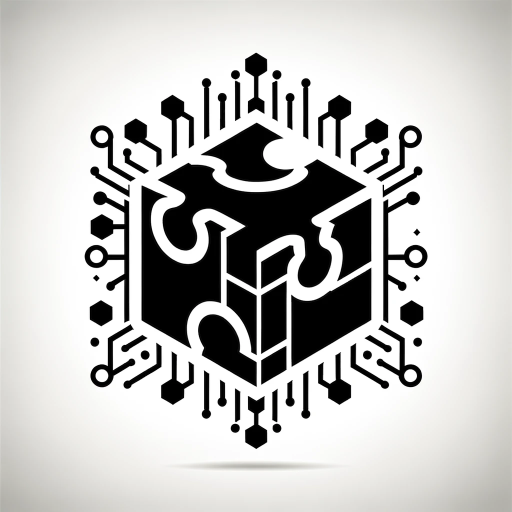ROS Assistant GPT for Robotics-ROS development assistant
AI-powered assistant for ROS development
!definition PoseStamped
!trends
Create a C++ ROS node that publishes a Twist message to the "/cmd_vel" topic
create a launch file that launches the file run.py from package donut, loads the parameters stored on the file yyy.config on the config folder from package pizza on the rosparam server and finally remaps the topic /twist to /twist_2
Related Tools
Load More
ROS Assistance
Expert in ROS1 and ROS2, ready to assist with all ROS-related queries.

Design System GPT
Mentor for designers on creating modern design systems

ArduinoGPT | Code Wizzard
Expert in Arduino programming, hardware, and latest 2024 tech updates

Ros2
Expert in ROS 2 actions and robotics applications

GPT Idea Roller
Sparking joy with AI brainwaves!

GPT for Modelling System Dynamics
Expert in dynamic systems modeling and simulation
20.0 / 5 (200 votes)
Introduction to ROS Assistant GPT for Robotics
ROS Assistant GPT for Robotics is a specialized version of the ChatGPT model, designed to assist with Robot Operating System (ROS) development and related tasks. It combines expert-level knowledge in ROS with the conversational capabilities of GPT to provide accurate, nuanced answers for ROS software development. The primary function of this assistant is to help users troubleshoot issues, provide coding assistance, suggest best practices, and offer detailed explanations of ROS concepts. For instance, when a developer encounters a problem with setting up a ROS node, the assistant can provide step-by-step guidance on how to configure the node correctly, ensuring it adheres to ROS standards and practices.

Main Functions of ROS Assistant GPT for Robotics
Troubleshooting
Example
A user encounters an issue where a ROS node is not communicating with another node. The assistant can diagnose potential issues such as network configuration problems or topic mismatches, providing detailed steps to resolve the problem.
Scenario
In a warehouse robot system, communication between the navigation node and the sensor data node fails. The assistant guides the developer through checking the ROS_MASTER_URI environment variable, ensuring the topics are correctly advertised and subscribed to, and verifying network connectivity.
Coding Assistance
Example
The assistant helps in writing a ROS service in Python. It provides the complete code for creating the service, including defining the service message type, implementing the callback function, and initializing the ROS node.
Scenario
A developer needs to create a service that calculates the square of a number. The assistant provides a Python script that defines the service, writes the callback function to perform the calculation, and sets up the node, ensuring the service is properly integrated into the ROS ecosystem.
Best Practices and Optimization
Example
The assistant suggests refactoring a ROS node to improve performance and maintainability. It recommends using lifecycle nodes and explains how to implement them.
Scenario
In a mobile robot project, the existing node structure is inefficient, leading to high CPU usage. The assistant advises restructuring the nodes using lifecycle management, reducing resource consumption, and improving the system's overall reliability.
Ideal Users of ROS Assistant GPT for Robotics
Robotics Engineers and Developers
These professionals benefit from the assistant's ability to provide detailed technical guidance and troubleshooting help. Whether they are developing new robotics applications or maintaining existing systems, the assistant offers valuable support, saving time and improving code quality.
Academic Researchers and Students
Researchers and students working on ROS-based projects in academic settings can use the assistant to quickly find solutions to common problems, understand complex concepts, and receive coding assistance. This helps them focus on their research objectives without getting bogged down by technical hurdles.

How to Use ROS Assistant GPT for Robotics
1
Visit aichatonline.org for a free trial without login, also no need for ChatGPT Plus.
2
Familiarize yourself with the various functionalities and hotkeys available in ROS Assistant GPT for Robotics by reviewing the README file and the provided documentation.
3
Determine your specific use case, such as code conversion, debugging, or generating boilerplate code, and use the appropriate hotkeys to access these features.
4
Engage with the assistant by typing your questions or commands. Be specific about your ROS distribution (e.g., Noetic, Foxy) and programming language (Python or C++) to get precise answers.
5
Use the provided links to additional resources and references for deeper understanding or to resolve any issues you might encounter.
Try other advanced and practical GPTs
Viral Social Visionary
AI-Powered Social Media Content Creation

Icon Maker
AI-powered simple icon creation

Stock Advisor
AI-powered stock insights and predictions

Find GPT Store
Discover AI-Powered Solutions Easily

ChadGPT
AI-Powered Logic and Problem Solving

HubermanRoutine
AI-powered optimization for your daily health routine.

Everything is Waifus
AI-Powered Anime Character Generator

Roundtable Talk
Simulate Conversations, Expand Perspectives.

Tappstr Article Writer
AI-Powered Article Generation Tool

Artistic Xplorer
AI-powered Twitter banner customization made easy.

AIキャリアアドバイザー
AI-powered career assistance for Japan

Smart Contract Analyzer
AI-powered Ethereum smart contract analysis.

- Debugging
- Troubleshooting
- Best Practices
- Code Conversion
- Boilerplate Code
Q&A about ROS Assistant GPT for Robotics
What is ROS Assistant GPT for Robotics?
ROS Assistant GPT for Robotics is an AI-powered tool designed to assist with the development and troubleshooting of ROS (Robot Operating System) applications. It provides code conversion, debugging help, and generates boilerplate code for common ROS node types.
How can ROS Assistant GPT help with code conversion?
The assistant can convert ROS code between Python and C++, ensuring that the translated code is valid and follows the right API equivalences in the target language.
Can ROS Assistant GPT assist with debugging?
Yes, ROS Assistant GPT can help identify and fix bugs in your ROS code. By providing your ROS distribution and programming language, the assistant can give tailored advice and solutions.
What types of ROS nodes can the assistant generate boilerplate code for?
The assistant can generate boilerplate code for various ROS nodes, including publishers, subscribers, services, and action servers/clients. This helps streamline the development process and ensures best practices are followed.
What are the prerequisites for using ROS Assistant GPT?
Users should have a basic understanding of ROS and programming in either Python or C++. Additionally, familiarity with the specific ROS distribution they are using will help in getting the most accurate and helpful responses.